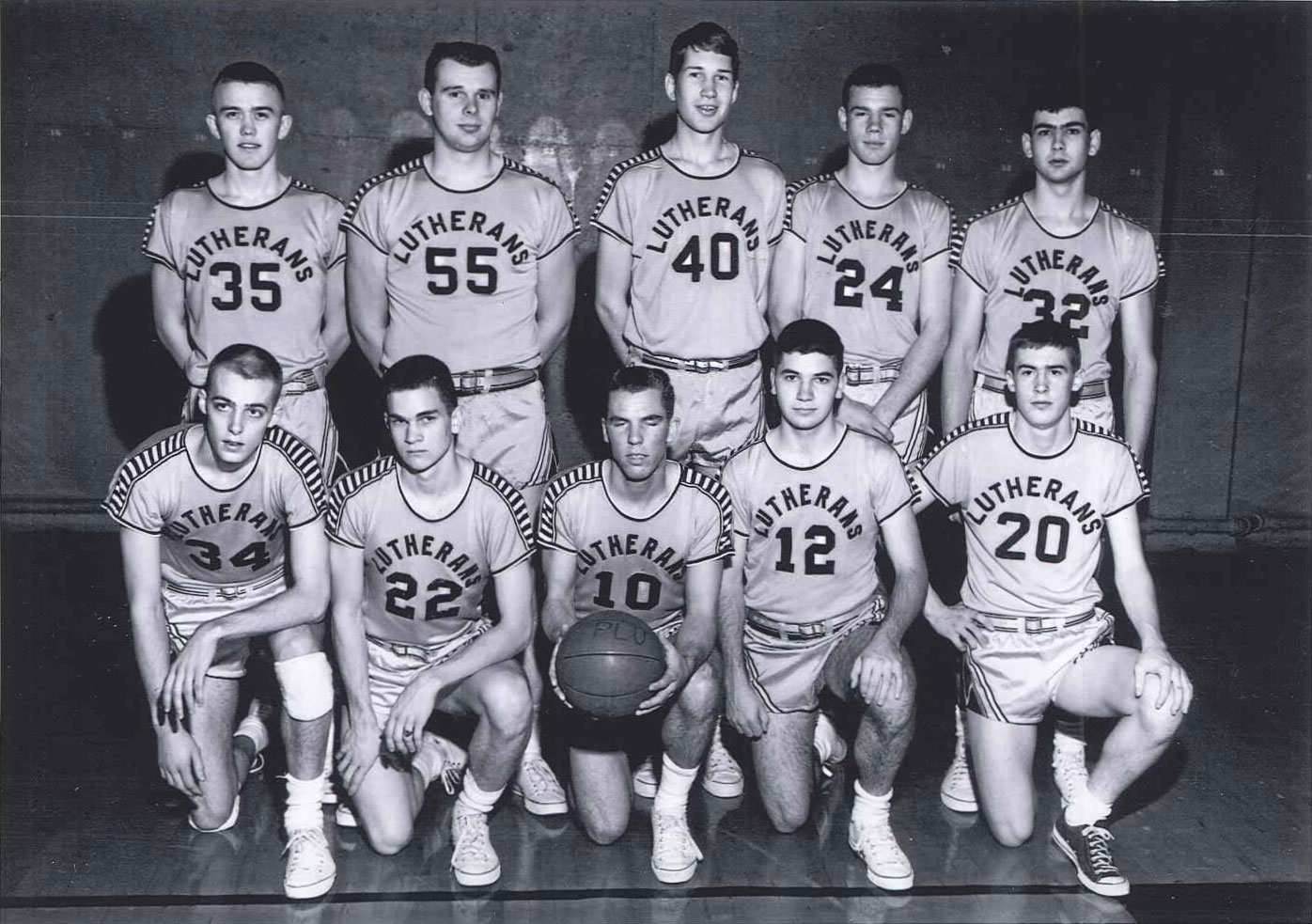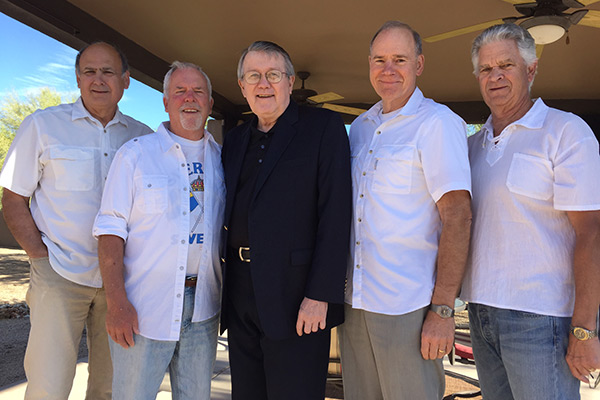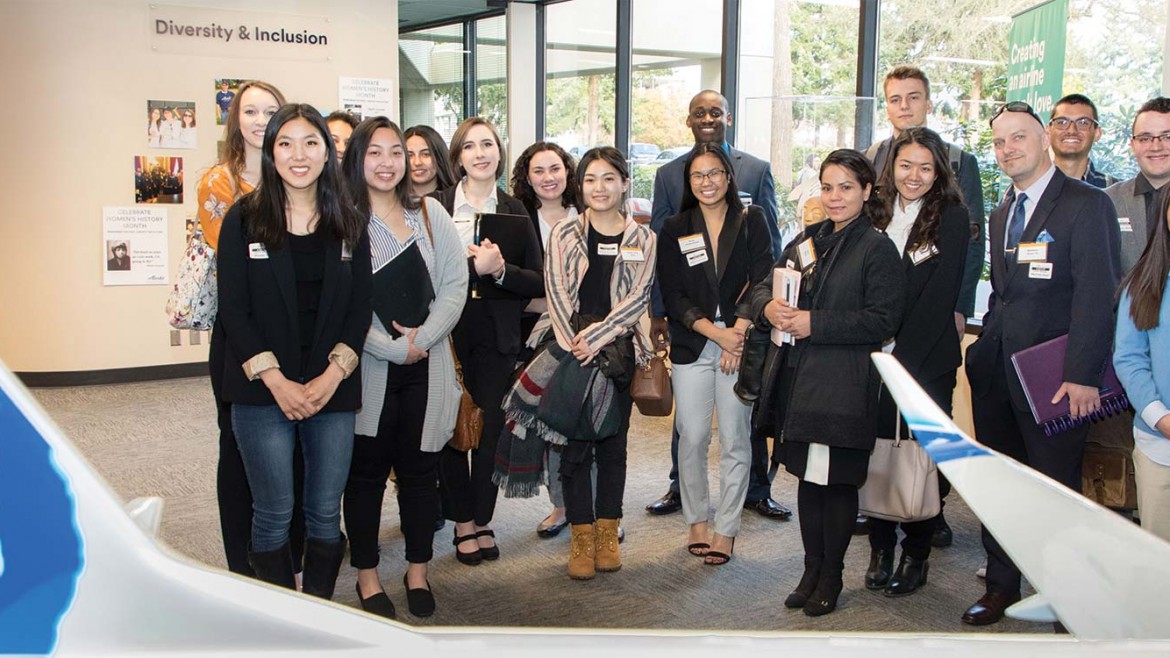Five Guys, One Basketball and Fifty Years
By Bob Ericksen, ’67
First, about those five guys and one basketball.
I arrived at PLU in the fall of 1963, thinking I might play a little basketball. There I met five guys who were bigger, better and faster than I was. After one season of mostly bench time, I turned it over to them and they did very well. During that first year, our class was the last to experience PLU going to the national NAIA tournament at Kansas City, which happened in nine out of the ten years from 1955 through 1964. Those five guys then helped lead PLU to three solid years, including an Evergreen Conference championship in 1967, our senior year.
A prior ResoLute article (by Tim Sherry, ’67) tells the story of those five guys reaching the age of forty and starting to gather at least once a year, usually for golf and always for reconnecting and reminiscing. In addition to their remarkable three-plus decades of togetherness, despite several thousand miles of separation in three directions, they were a notable group: Doug Leeland, an MD; Tom Lorentzsen, a doctor of optometry; Al Hedman, a PhD in psychology; Tim Sherry, with an MA in English from the University of Chicago and an impressive career as a teacher and local principal; and Mark Andersen, with an M.A. in physical therapy from Stanford and a practice he built up in Vallejo and Benecia, Calif. They had each been commendable student-athletes, and were now each important in their careers.
I am writing now because two of those five guys, Doug Leeland and Alan Hedman, died recently. Those two also happen to have been two of my closest PLU friends.
My friendship with Doug and Alan began when we were randomly assigned to the old, wooden one-story Evergreen dormitory on lower campus. We felt lucky, priding ourselves on the cohesiveness within this dorm and our dorm’s accomplishments on campus—from dramatic transformations of our H-shaped building for homecoming weekend to success in intramural athletics and influence in campus politics. During those four years I hung out in Doug’s room almost every night, and I roomed with Alan twice.
Doug was a great student. He helped me study the night before every Organic Chemistry test, making sure I managed to pass while he got his A. He was also an Academic All-American in basketball. After finishing seventh in his class at the University of Washington Medical School, he held a residency at the Mayo Clinic in Minnesota, and spent much of his career at a branch of the Mayo Clinic in Scottsdale, Ariz.
Doug was one of the most avid students of pop music among my friends, and kept us up-to-date during the first years of Beatlemania. In June of 1967, following our graduation, Al and I joined Doug and two others in in Doug’s Pontiac GTO for a road trip south, listening the whole way to the just-released Sergeant Pepper album that was getting wall-to-wall play on the radio. We first stopped in San Francisco, trying, with our one-day growth of whiskers and slightly mussed-up short haircuts, to look as if we fit in at Haight-Ashbury during that Summer of Love. We then visited Los Angeles, crossed the border into a couple of Mexican towns, dropped off Tom Baumgartner (’68) at his home in Scottsdale and stopped for an hour or two in Las Vegas on our straight-through drive back home to the PNW.
Decades later in 2010, Doug—maybe the nicest guy of all of us—was diagnosed with Alzheimer’s. He died in February 2019. (See his impressive obituary at www.messingermortuary.com.)
After the Alzheimer’s, Doug’s death was not a surprise. Al Hedman, however, surprised us all by dying in December 2018, just ten days after being hospitalized with pneumonia.
I found out about Al’s illness when I got a hospital call from his daughter Briana on a Wednesday. I talked with Al, who seemed well on the path to recovery and confidently told me that his three-day stay had been his longest in a hospital ever. In his normal way, he was chatting with all the hospital staff and had quickly learned their names. I wasn’t worried; over two or three previous winters, Alan and I had done some hiking in the desert and mountains near Palm Springs, and I considered his lungs quite fit.
The following day, Judith and I (plus our dog) started driving down the Oregon coast on our way to Palm Springs, sticking with the plans we’d made for this year’s trip there—even as reports from Al’s wife Kathleen got increasingly dire. We arrived in Palm Springs late that Tuesday and visited Alan in the hospital the next day. Judith and I took turns talking to him for ten or fifteen minutes at a time, uncertain whether he could hear us. He died later that day.
Alan’s memorial service in Joshua Tree, Calif., north of Palm Springs, tells a lot about him. It included attendees from various categories—local friends who’d admired him, professional friends who remembered his career at the USC Student Health Center and then in private practice, family members from the West and East Coast, and all three of his surviving basketball teammates.
Alan and Kathleen had moved to Morongo Valley several years previously, and created a remarkable homestead there. This included a remodeled small home, an adjacent office and a greenhouse, all set at the foot of a mountain and commanding a beautiful view of Morongo Valley. Kathleen allowed Alan to indulge his passion for bright murals, cacti, found objects and old metal bric-a-brac. One corner of the property became a sculpture farm, populated by found objects and rusty metal representing the farm animals Alan remembered from his small-town childhood in Nooksack Valley, Wash.
Alan’s greatest coup was acquiring an old, rusty circa-1950 Ford tractor from the family farm in North Dakota. He had it shipped to the Morongo Valley on a flatbed truck and gave it pride of place at the front corner of his “farm.” At the memorial service for Alan, Tom Lorentzsen remembered his first visit to Al’s place, when he’d told him, “Alan, this is all junk!” Alan then took him to a huge installation in the desert, filled with a great variety of “junk” recovered from Watts and other neighborhoods in Los Angeles. This had convinced him, Tom admitted, that Alan really was creating art.
Mark Andersen told some stories about sharing back-court duties with Alan on the PLU team. This included the opening minute of a game at College of Idaho, in which Alan suggested that he and Mark put midcourt pressure on what he considered the other college’s weak guards—resulting in C of I making a quick dash past them to the basket for two points. Undeterred, Al convinced Mark to do it a second time, leading to the same result. Coach Gene Lundgaard immediately called a timeout and castigated his “dumb guards.” Mark and Alan privately referred to each other by that nickname over the rest of the season.
Mark also mentioned that Alan had surprised him with a call he’d made to Mark a few years back, asking Mark to introduce him at his induction into the PLU Athletic Hall of Fame. “Whatever for?” Mark had shouted into the phone. Even Mark and other close friends of Alan’s hadn’t known what a good baseball pitcher Alan had been: a crafty lefthander, he’d played for four years, and held the PLU record for career wins until it was finally surpassed decades later.
Tim Sherry was the last of Alan’s three basketball teammates to speak at the memorial. Tim—the only poet among the five (as far as I know), with one volume of poetry already published and a second on the way—capped his remarks by reading a couple of his poems, a very nice addition.
During his remarks, Tim described a road trip with Alan that displayed Alan’s patient curiosity. First Alan had insisted they stop at the Telephone Museum in Cle Elum, where they stayed for three hours, with Alan looking at everything, quizzing the proprietor and sitting down for a cup of tea. Later during the same trip, Alan spotted a sign for a barbed-wire museum and insisted on following the sign down a back road. When they found the museum, they again stayed for three hours, so Alan could ask his questions and have his cup of tea.
Many PLU grads, especially those about my age, will remember these five guys. I write about them now, not only because Doug and Alan were friends of mine who died before they should have, but also because I believe that all five of those guys, united by basketball back in the day, represent some of the best qualities of a PLU education. They provide a model for longstanding PLU friendships, and show how they can and should be nurtured.





